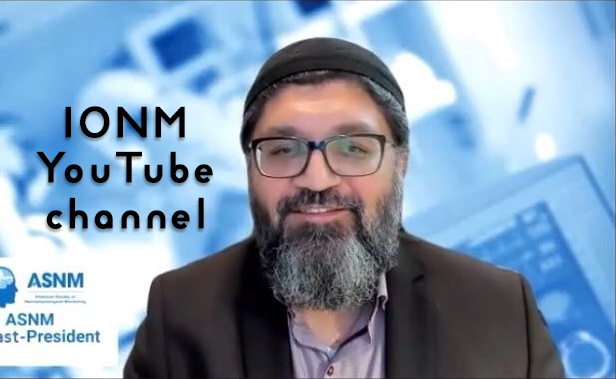The Effects of Microgravity on EEG Recordings: A Systematic Review
DOI:
https://doi.org/10.5281/zenodo.10689996Keywords:
eeg, microgravity, astronaut, aeeg, electroencephalography, human spaceflight, bioastronautics, brain-computer interfaceAbstract
To support extended human activity in space, it is essential to understand how microgravity affects cognitive and neurophysiological functions. Electroencephalography (EEG) is a non-invasive method of accurately monitoring neurological changes and has been widely used in aerospace research to study changes in human cognition under varying gravitational conditions.
This systematic review explores how EEG can be utilized to observe neural pattern changes in microgravity. Among the notable changes observed are the attenuation of the N200 and P300 event-related potentials (ERPs), as well as alterations to alpha power that persist even after returning to normal gravity conditions
References
NASA. (2009, February 13). What is Microgravity? - NASA. https://www.nasa.gov/centers-and-facilities/glenn/what-is-microgravity.
Lipshits, M. I., & Levik, Yu. S. (2023). Cognitive Functions of the Brain: A Review of Research in Weightlessness. Human Physiology, 49(2), 165–175. https://doi.org/10.1134/S0362119722700219.
Cheron, G., Cebolla, A. M., Petieau, M., Bengoetxea, A., Palmero‐Soler, E., Leroy, A., & Dan, B. (2009). Chapter 13 Adaptive Changes of Rhythmic Eeg Oscillations in Space. In International Review of Neurobiology (Vol. 86, pp. 171–187). Elsevier. https://doi.org/10.1016/S0074-7742(09)86013-3.
Pusil, S., Zegarra-Valdivia, J., Cuesta, P., Laohathai, C., Cebolla, A. M., Haueisen, J., Fiedler, P., Funke, M., Maestú, F., & Cheron, G. (2023). Effects of spaceflight on the EEG alpha power and functional connectivity. Scientific Reports, 13(1), 9489. https://doi.org/10.1038/s41598-023-34744-1.
Buoite Stella, A., Ajčević, M., Furlanis, G., & Manganotti, P. (2021). Neurophysiological adaptations to spaceflight and simulated microgravity. Clinical Neurophysiology, 132(2), 498–504. https://doi.org/10.1016/j.clinph.2020.11.033.
Becker, L., Nilsson, T., & Cowley, A. (2022). Electroencephalography (EEG), electromyography (EMG) and eye- tracking for astronaut training and space exploration.
Home | NASA Spinoff. (n.d.). Retrieved September 29, 2023, from https://spinoff.nasa.gov.
Sutton, J. P. (2021). Clinical Benefits of Bioastronautics. In L. R. Young & J. P. Sutton (Eds.), Handbook of Bioastronautics (pp. 7–19). Springer International Publishing. https://doi.org/10.1007/978-3-319-12191-8_79.
Page, M. J., McKenzie, J. E., Bossuyt, P. M., Boutron, I., Hoffmann, T. C., Mulrow, C. D., Shamseer, L., Tetzlaff, J. M., Akl, E. A., Brennan, S. E., Chou, R., Glanville, J., Grimshaw, J. M., Hróbjartsson, A., Lalu, M. M., Li, T., Loder, E. W., Mayo-Wilson, E., McDonald, S., … Moher, D. (2021). The PRISMA 2020 statement: An updated guideline for reporting systematic reviews. BMJ, n71. https://doi.org/10.1136/bmj.n71.
Yule, S., Robertson, J. M., Mormann, B., Smink, D. S., Lipsitz, S., Abahuje, E., Kennedy-Metz, L., Park, S., Miccile, C., Pozner, C. N., Doyle, T., Musson, D., & Dias, R. D. (2023). Crew Autonomy During Simulated Medical Event Management on Long Duration Space Exploration Missions. Human Factors, 65(6), 1221–1234. https://doi.org/10.1177/00187208211067575.
Cebolla, A. M., Petieau, M., Palmero-Soler, E., & Cheron, G. (2022). Brain potential responses involved in decision-making in weightlessness. Scientific Reports, 12(1), 12992. https://doi.org/10.1038/s41598-022-17234-8.
Chu, H., Cao, Y., Jiang, J., Yang, J., Huang, M., Li, Q., Jiang, C., & Jiao, X. (2022). Optimized electroencephalogram and functional near-infrared spectroscopy-based mental workload detection method for practical applications. Biomedical Engineering Online, 21(1), 9. https://doi.org/10.1186/s12938-022-00980-1.
Klein, T., Wollseiffen, P., Sanders, M., Claassen, J., Carnahan, H., Abeln, V., Vogt, T., Strüder, H. K., & Schneider, S. (2019). The influence of microgravity on cerebral blood flow and electrocortical activity. Experimental Brain Research, 237(4), 1057–1062. https://doi.org/10.1007/s00221-019-05490-6.
Takács, E., Barkaszi, I., Czigler, I., Pató, L. G., Altbäcker, A., McIntyre, J., Cheron, G., & Balázs, L. (2021). Persistent deterioration of visuospatial performance in spaceflight. Scientific Reports, 11(1), Article 1. https://doi.org/10.1038/s41598-021-88938-6.
Wollseiffen, P., Klein, T., Vogt, T., Abeln, V., Strüder, H. K., Stuckenschneider, T., Sanders, M., Claassen, J. A. H. R., Askew, C. D., Carnahan, H., & Schneider, S. (2019). Neurocognitive performance is enhanced during short periods of microgravity—Part 2. Physiology & Behavior, 207, 48–54. https://doi.org/10.1016/j.physbeh.2019.04.021.
Farjoud Kouhanjani, M., Akbarialiabad, H., & Asadi-Pooya, A. A. (2023). Science or fiction; living in extremes of the universe (space and under the sea) even with epilepsy: A systematic review. Epilepsy & Behavior, 144, 109261. https://doi.org/10.1016/j.yebeh.2023.109261.
Zhang, P., Yan, J., Liu, Z., & Zhou, Q. (2023). Impeded frontal-occipital communications during Go/Nogo tasks in humans owing to mental workload. Behavioural Brain Research, 438, 114182. https://doi.org/10.1016/j.bbr.2022.114182.
Weber, J., Javelle, F., Klein, T., Foitschik, T., Crucian, B., Schneider, S., & Abeln, V. (2019). Neurophysiological, neuropsychological, and cognitive effects of 30 days of isolation. Experimental Brain Research, 237(6), 1563–1573. https://doi.org/10.1007/s00221-019-05531-0.
Ilyin, E. A. (2018). Physiological Status of Polar Explorers and Its Improvement with Drugs in Conditions of One-Year Isolation at the Vostok Station in the Antarctic. Human Physiology, 44(7), 740–747. https://doi.org/10.1134/S0362119718070046.
Lazarev, I. (2021). Event-related potentials accompanying performance of computer mouse pointing task in the long-term dry immersion model of microgravity. Acta Astronautica, 181, 461–467. https://doi.org/10.1016/j.actaastro.2021.01.040.
Alfano, C. A., Bower, J. L., Cowie, J., Lau, S., & Simpson, R. J. (2018). Long-duration space exploration and emotional health: Recommendations for conceptualizing and evaluating risk. Acta Astronautica, 142, 289–299. https://doi.org/10.1016/j.actaastro.2017.11.009.
Liu, Y., Habibnezhad, M., & Jebelli, H. (2021). Brain-computer interface for hands-free teleoperation of construction robots. Automation in Construction, 123, 103523. https://doi.org/10.1016/j.autcon.2020.103523.
Schneider, S., Brümmer, V., Carnahan, H., Dubrowski, A., Askew, C. D., & Strüder, H. K. (2008). What happens to the brain in weightlessness? A first approach by EEG tomography. NeuroImage, 42(4), 1316–1323. https://doi.org/10.1016/j.neuroimage.2008.06.010.
Downloads
Published
How to Cite
Issue
Section
License
Copyright (c) 2024 J of Neurophysiological Monitoring

This work is licensed under a Creative Commons Attribution 4.0 International License.





